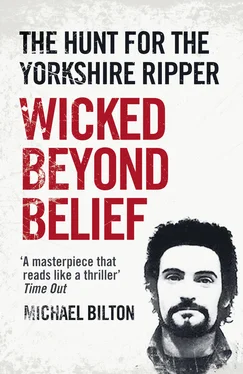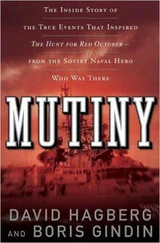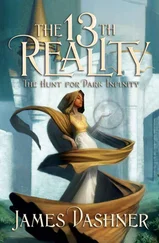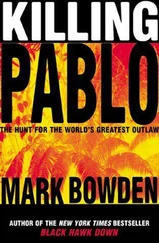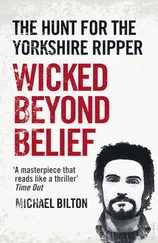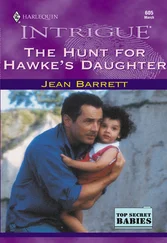Stockdale became conscious of comments passing between other members of the team. ‘Is it him, then?’ ‘Do you think it’s another one?’ The questioning was addressed to no one in particular, like a murmur rising almost to a groundswell. Finally he turned to Peter Swann and asked: ‘Is it who? What’s going on?’
Swann explained. ‘We’ve got a serial killer – he’s being called The Ripper.’
‘Bloody hell, just my luck to pick up one of these,’ Stockdale exclaimed. It was the first time he had heard the words ‘The Ripper’.
Stockdale examined the woman’s clothing carefully. He believed that after they were pulled down, the jeans and possibly the tights as well had been pulled up again partially. Neither the tights nor the zip fastener of the jeans was damaged in the operation and it was evident that some care had been exercised by the killer. The surface of the body was smeared with blood and gave the appearance of having been manoeuvred by the killer, who must have had wet blood on his hands. Looking around the room generally, he could see there had been no violent struggle or any attempt to ransack the place. He concluded that the sequence of events had been as follows:
1 Atkinson was struck on the head from behind as she entered the room.
2 She fell to the floor bleeding and lay where she fell for some minutes.
3 The killer moved the unconscious body to the bedside where probably her leather coat was removed before being dumped in the corner of the room. The jeans could have been undone at this stage and pulled down, together with her underclothes, and this caused the loss of the left shoe. Bloodstaining on the carpet, the handbag, and the smearing on the leg of the bedside chair, showed probably that another blow to the skull had been struck and that the head had moved about on the floor.
4 The killer, with wet bloody hands, manoeuvred the body on to the unmade bed, probably by clambering on to the bed and dragging the body, rather than by lifting it. In doing so a bloody footwear impression was left on the bottom sheet between the body and the wall.
5 The bloodstream distribution on the bed indicated further blows to the head and a great deal of blood being lost as a result of the wounds sustained. He also believed the stabbing injuries to the abdomen were probably sustained on the bed.
6 The killer then began a process of ‘tidying up’, during which the jeans were partially pushed or drawn on to the legs. The bedding was then piled on top of the body and straightened out sufficiently to cover it almost completely, leaving the injuries and the greater part of the bloodstaining hidden from view.
Shortly before midnight all the work that could be done by Domaille’s team, Gee and Stockdale was complete, and the body was placed on a large plastic sheet and put into a coffin shell before being taken to the Bradford city mortuary. There Tina’s ex-husband, Ramen Mitra, identified her body in the presence of Professor Gee and the coroner’s officer. At 1.30 a.m. on the Sunday morning Gee began his post-mortem. It continued until 5 a.m. The usual crowd of officers was present, including a young constable called Alexander, who was, as the first officer at the scene of the murder, also required to attend the post-mortem.
During the autopsy Gee discovered four major depressed fractures of the skull caused by it being struck with a blunt instrument which left crescent-shaped wounds. There were also wounds to the trunk in the form of abrasions to the middle of the back and another group of grazes and stab wounds over the lower abdomen, linked by an irregular linear abrasion across the left side of the chest. He believed that some kind of large-size hammer was involved. Domaille noticed several stabbing wounds just above the pubic region. The killer obviously had some kind of serious sexual hang-up. These and some of the other stab wounds caused Professor Gee particular problems. He thought some object with a blade half an inch wide might have been used – perhaps a screwdriver or chisel.
What he was looking at confirmed what they had seen in the three other murders – a clear and established pattern: similar kinds of head injuries; similar movement of the clothing; the absence of sexual intercourse; and multiple stab wounds produced by a variety of different instruments. ‘So far we had two different knives, one screwdriver, and, I now thought, some rectangular-shaped, rather blunt object, like, say, a cold chisel,’ he said later. ‘In fact, in this I was wrong. I had by now got the clear impression that what happened each time was that the victim was knocked down purely to make them immobile, possibly with the same hammer, then the clothing was disarranged and the stab wounds inflicted with a different weapon each time, because that act provided the necessary satisfaction [for the killer]. One of the big problems I found in an extended series was trying to keep distinct the themes of the patterns of pathology on the one hand and the nature of the actual weapons on the other. But certainly in this case my conception of a hammer on one hand and a blunt chisel on the other prevented me from putting the two together – into one weapon.’ He only ascertained the truth much later.
For Gee, as a forensic pathologist, it was crucial to determine how the death was caused. He examined the pattern of injuries, the position of the body, the nature of the wounds, and endeavoured to reconstruct a form in which the injuries could have been sustained. This meant developing, sooner or later, some idea of what actually happened – the order of events. It also meant developing preconceived ideas about the situation, but this could be dangerous, though he saw no way to avoid it. Sometimes it led to mistakes. In his own mind he saw a clear and logical sequence of events for all four cases in the series so far.
‘I was quite wrong,’ Gee said. ‘It turned out that this particular girl [Atkinson] was indeed struck with a hammer, but the penetrating injuries were caused by the claws of the claw hammer, which was used on this occasion.’ He should have realized this, he said, by noticing that there was a small second abrasion alongside the main one on the side of the body and from the general pattern of marks on the abdomen. ‘I am sure I was misled on this occasion because of having developed this preconceived idea of two weapons being used – a hammer and a stabbing instrument of some kind.’
A thorough search of the flat produced a diary among Atkinson’s meagre possessions. It contained the names of some fifty men, a good many of whom were probably clients. Two days after the body was found Domaille briefed the local news media about the latest killing.
This was a brutal murder, a very brutal murder. The man we are looking for could be a maniac. The leads that we are following are that there are a number of people in the area that I know knew this lady. I have her diary. This lists a lot of people, names a lot of people, and I would like to see all those people, I shall be making inquiries to trace them. I shall treat as a matter of complete confidentiality any information that comes to me. Anyone can ask to see me personally and I think it might be helpful to some people if they came forward to see me, rather than me making inquiries about some of the facts that I know.
Domaille’s team of ninety officers had begun working hard to learn more about the murdered woman. It emerged that Patricia Tina Atkinson’s family had lived in the Thorpe Edge district of Bradford and she had two brothers. In 1960, when she was sixteen years old, she met her husband, Ramen Mitra, a Pakistani, at a dance hall in the town. She was working as a burler and mender at a mill in Greengates, Bradford. Perhaps it was an omen that they married on All Fools Day – 1 April 1961. They then lived for a short time with her parents before moving to their own home at Girlington, an area of Bradford next to Manningham. During this period both of Tina’s parents died. She and Ramen, known to most people as ‘Ray’, had three daughters during subsequent years and went on to live mainly in the area of Thorpe Edge where Tina had grown up.
Читать дальше
